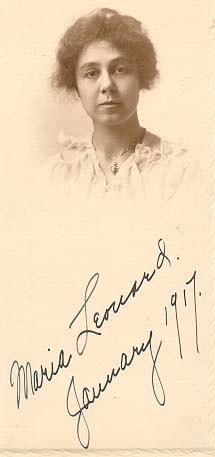Masters Theses
Early in the twentieth century, the college was offering masters degrees. From 1903 to 1948, 14 of 714 theses (catalogued in the library) were in mathematics. Of these 14, eleven were written by women. Notice also, that four of these women (Denis, Hood, Belschner, Hansman) taught mathematics at the college.
In 1966, the college dropped the masters degree program (the last masters was actually awarded in 1971), but chose to keep the Masters in Teaching program. This program allows practicing teachers to fulfill the appropriate course work during the summer session.
- 1903 - Adelaide Denis: A discussion of the cases when two quadratic equations involving two variables can by solved by the methods of quatratics.
- 1910 - Mabel Sylinda Bateman: Circular points at infinity and the sphere-circle.
- 1910 - Maria Leonard: Historical and critical review of the solution of numerical equations by methods of approximation.
- 1912 - Elsa Mae Elrick: Geometric solutions of algebraic equations.
- 1912 - Alfred Fischer: An introduction to Laplace's operator and the potential function.
- 1913 - Hixie Mildred Rider: The graphic representation of the complex number, historically treated.
- 1928 - Catherine Hood: On simultaneous quadratic equations solvable by quadratics.
- 1929 - Martha Belschner: The construction of the regular polygon of 257 sides.
- 1932 - Joseph William Ferguson: Some properties of non-analytic functions of a complex variable.
- 1933 - Louise Lyons: On resultants of ternary forms.
- 1936 - Margaret Hansman: Conjugate functions in space.
- 1938 - Edgar Linus Swanson: Pencils of cubic curves containing six singular curves.
- 1940 - Georgia Louise Scott: Some relations involving the segments joining N+2 points in N dimensions.
- 1948 - Jacqueline Given: The locus of the lines which intersect a quartic curve in four harmonic points.
Various Photos
Maria Leonard

Report an issue -
Last updated: 05/22/2024


